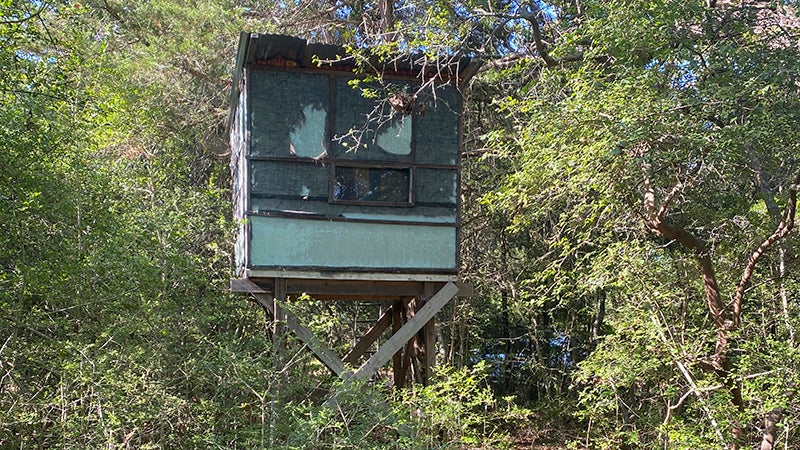BRIAN JOHNSON — Do maintenance for fall hunting now
Published 12:01 am Wednesday, June 24, 2020

- Here is a stand that I am working on. With a little trimming and clean up, it should be good to go. I might even do a little painting. (Brian Johnson/Special to The News)
|
Getting your Trinity Audio player ready...
|
Just this past week, I had the opportunity to go check out a new place for deer and hog hunting.
As the sweat poured off of me, drenching my shirt, I asked myself what in the world was I doing in the woods on a hot day in June when there wasn’t even a hint of a breeze. The truth is that if you want to have an enjoyable time hunting when the cool weather of fall rolls in, you have to put in the work during the dog days of summer.
Since I am not particularly fond of working outside during the heat, I try to get most of my preseason work done early and late when the temperatures are cooler outside. Early, late, or midday, regardless, the work has to get done. The good news is that everything doesn’t have to be done all at the same time. If you pace yourself, it really isn’t that bad. In fact, preparing for the deer season can be a great time to spend with family and friends enjoying God’s great creation.
Here is a short checklist of a few of the things that I try to accomplish in the woods each year before season.
1. Feeder repair — Since most of my hunting is for hogs, I find it very beneficial to use an electric feeder. I typically let my feeders run empty at the end of deer season and then start filling them sometime during the summer. I figure that the animals have plenty to eat in the spring so there is no sense in me wasting money on feed.
After sitting empty for a few months, there is typically something that quits working. My task can be as simple as replacing batteries and filling them with corn, or as difficult as patching and replacing motors and timers. Either way, I like to make sure my feeder is working properly well before I plan on hunting.
2. Trail clearing — This is the time of year to bring in the tractor, lawn mower, or power tools to make sure that all of the roads and trails you will be taking to your stand are clear from branches and other obstructions. Make sure you can get down lease roads without scratching your truck. It is also important to make sure that you have a trail that you can walk down quietly and without touching branches that will hold your scent.
3. Lane clearing — This is similar to trail clearing, only it sometimes involves cutting branches that are much higher off the ground.
For this step, you will need to climb into your stand and make sure that you are free to draw your bow or aim your gun without interference from leaves and limbs. You will also want to make sure that there are no limbs in the lanes where you will be shooting. As a word of precaution, only trim what is necessary so that you will still have plenty of cover to hide your movement form the animals.
4. Stand repair and inspection — This is probably the most important of all of the steps. Be sure to check all stand straps, legs, seats, boards, and anything that can rust, rot or tear. Assume that if it can break, it will.
If you hunt a box blind, this is also a good time to kill wasps and remove any critters that have taken up temporary residence. I have heard stories of hunters climbing into a stand only to find out they are being joined by a snake. A little preparation will help you avoid this situation.
By accomplishing these tasks, you will be heading in the right direction towards a productive hunting season. The clock is ticking. Will you be ready?
•
Brian Johnson, originally of Port Neches, is pastor of First Baptist Church of Winnie, owner of DuckDogTrainer.com and outdoors writer for The News.





